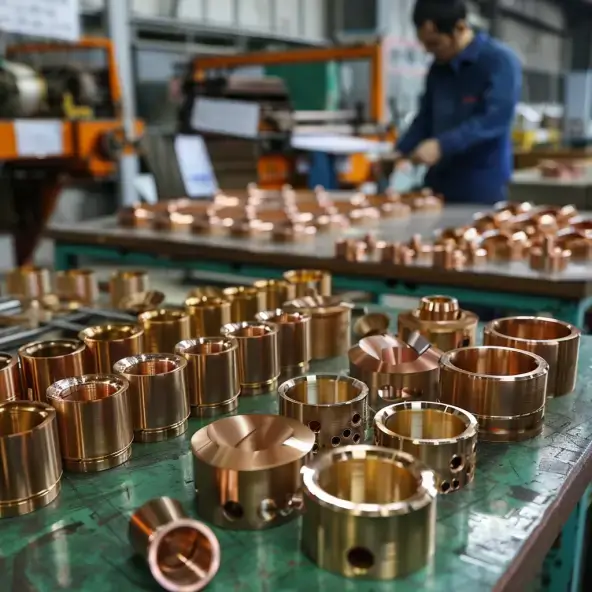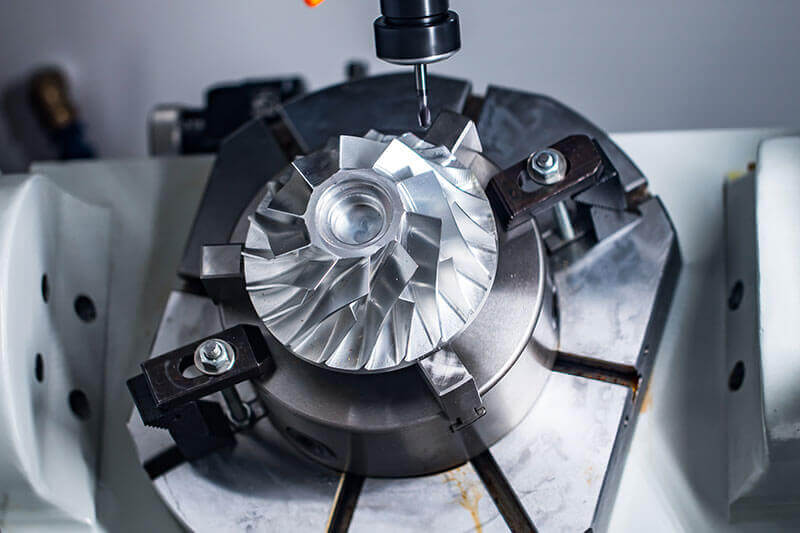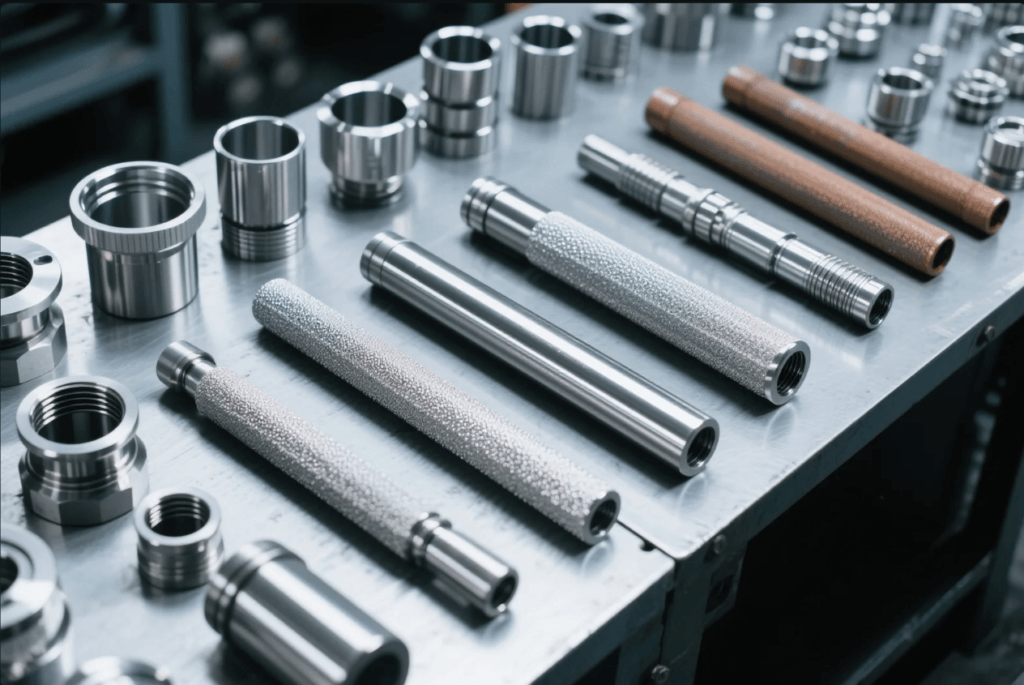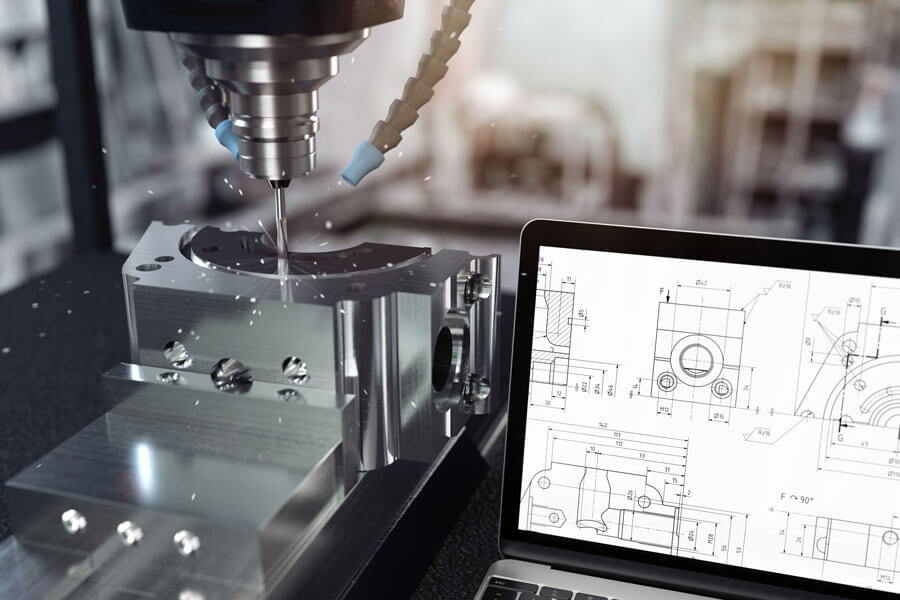CNC Milling Copper Alloys: 5 Critical Challenges & Expert Fixes
Copper alloys are the backbone of industries ranging from electrical engineering to aerospace, valued for their exceptional conductivity, corrosion resistance, and malleability. However, machining these materials on CNC mills presents unique challenges that demand specialized knowledge. At SCZY LTD, our 25+ years of experience in copper alloy machining have allowed us to develop proven strategies for overcoming issues like tool adhesion, burr formation, and thermal distortion. This guide breaks down the top 5 challenges in copper alloy CNC milling and provides actionable solutions to ensure precision and efficiency.
1. What Is Copper Alloy Milling?
Copper alloy milling is a subtractive manufacturing process where rotating multi-tooth cutters remove material from copper-based workpieces to create precise components. Unlike rigid steels or brittle ceramics, copper alloys (e.g., brass, bronze, beryllium copper) exhibit high ductility and thermal conductivity, which require tailored approaches to avoid surface defects and tool wear.
Key Differences from Other Metals
| Property | Copper Alloys | Stainless Steel | Aluminum |
| Thermal Conductivity | 386 W/m·K (pure copper) | 16 W/m·K (304 stainless) | 205 W/m·K |
| Hardness (HB) | 50-200 (depending on alloy) | 150-200 | 30-150 |
| Ductility | High (elongation 20-40%) | Medium (elongation 40-60%) | Very high (30-50%) |
2. Common Copper Alloys Used in Machining
Understanding alloy composition is critical for selecting the right machining strategy:
a. Free-Machining Brasses (e.g., C36000)
Composition: 60% copper, 35% zinc, 5% lead
Advantages: Excellent machinability, low cost, good thermal conductivity
Disadvantages: Lead segregation can cause tool edge buildup; prone to burrs
b. Beryllium Copper (e.g., C17200)
Composition: 98% copper, 2% beryllium
Advantages: High hardness (35-40 HRC), superior fatigue resistance
Disadvantages: Toxicity requires special handling; rapid tool wear due to hardness
c. Phosphor Bronze (e.g., C52100)
Composition: 95% copper, 5% tin, 0.3% phosphorus
Advantages: High elasticity, excellent corrosion resistance
Disadvantages: Low thermal conductivity increases heat retention
3. The Copper Alloy Milling Process: A Step-by-Step Overview
a. Material Preparation
Annealing: Soften heat-treated alloys (e.g., beryllium copper) at 400°C for 1 hour to reduce hardness
Stock Selection: Choose extruded or forged blanks to minimize internal stresses
b. Tool Setup
Spindle Speed: Start at 1,500-3,000 RPM for brass, 800-1,500 RPM for beryllium copper
Tool Length Calibration: Use laser systems to ensure ±0.002mm accuracy
c. Core Machining Stages
Rough Milling: Remove 70-80% material with 2-flute end mills (copper removal rate: 10-15 cm³/min)
Finish Milling: Switch to 4-flute carbide tools for surface finishes ≤Ra1.6μm
4. Challenge 1: Tool Adhesion & Built-Up Edge (BUE)
Problem Analysis
The high ductility of copper alloys causes chips to weld onto the tool’s cutting edge, forming a built-up edge (BUE). This leads to:
Surface scratches (roughness increases by 50-100%)
Accelerated tool wear (tool life reduced by 30% in brass machining)
Inconsistent dimensional accuracy
Case Study: A medical device manufacturer experienced BUE-induced defects in C36000 brass connectors, resulting in a 20% rejection rate.
Expert Fixes from SCZY LTD
Tool Material Upgrade
| Tool Type | Advantage | Disadvantage | Best For |
| High-Speed Steel (HSS) | Low cost, good for soft brasses | Poor heat resistance (≤550°C) | Prototyping (≤10 parts) |
| Carbide (WC-Co) | 3x longer life in medium-hard alloys | Brittle; requires rigid setup | Production runs (50+ parts) |
| Diamond-Coated Tools | Virtually zero BUE in pure copper | High cost ($500+/tool) | Precision components (medical/aerospace) |
Process Adjustments
Increase Cutting Speed: From 100 m/min to 180 m/min (BUE formation peaks at 80-120 m/min)
Apply MQL (Minimum Quantity Lubrication): 5ml/h vegetable oil + 6bar air reduces friction by 40%
5. Challenge 2: Burr Formation on Free-Machining Brasses
Problem Analysis
The lead in free-machining brasses (e.g., C36000) creates short, brittle chips that curl into sharp burrs along part edges. Traditional deburring adds 15-20% to production time, and manual removal risks surface scratches.
Expert Fixes from SCZY LTD
Tool Geometry Optimization
Use end mills with 35° helical angles (vs. standard 30°) to improve chip evacuation
Sharpen cutting edges to 0.01mm radius (vs. typical 0.05mm) for cleaner cuts
Machining Strategy Tweaks
Climb Milling: Reduces burr size by 60% compared to conventional milling
Edge Pre-Processing: Machine a 0.5mm chamfer before final contouring to weaken burr roots
6. Challenge 3: Thermal Distortion in Thin-Walled Parts
Problem Analysis
Copper’s high thermal expansion coefficient (17×10⁻⁶/°C) causes thin walls (<1mm) to warp when exposed to cutting heat. A 20°C temperature rise can shrink a 50mm diameter ring by 0.017mm, exceeding aerospace tolerances (±0.01mm).
Expert Fixes from SCZY LTD
Cooling System Upgrades
Cryogenic Cooling: -20°C cold air reduces cutting zone temperature by 30%, used in SCZY’s aerospace projects
Through-Tool Flood Cooling: 10bar pressure ensures coolant reaches deep cavities, preventing heat buildup
Workholding Innovation
Vacuum Chucks: Distribute clamping force evenly (0.8bar pressure for 0.5mm-thick copper sheets)
Modular Fixtures: Allow thermal expansion by using spring-loaded supports
7. Challenge 4: Tool Life Shortage in High-Conductivity Alloys
Problem Analysis
Pure copper (C1100) transfers heat so efficiently that tools lose cutting edge integrity faster, while hard alloys like beryllium copper wear tools 2x faster than brass.
Expert Fixes from SCZY LTD
Tool Material Selection
Pure Copper/Brass: Fine-grain carbide (grain size <0.8μm) with TiCN coating (tool life +40% vs. uncoated)
Beryllium Copper: CBN tools (suitable for >30 HRC, life extended 3x in SCZY’s tests)
Cutting Parameter Optimization
| Alloy | Vc (m/min) | fz (mm/tooth) | ap (mm) |
| C1100 Pure Copper | 200-250 | 0.1-0.15 | 2-3 |
| C17200 Beryllium Cu | 80-120 | 0.05-0.1 | 0.5-1 |
8. Challenge 5: Surface Finish Inconsistencies on Mirror-Grade Parts
Problem Analysis
Ductile copper alloys vibrate easily during milling, creating 颤纹 (waviness>0.05mm) on surfaces requiring Ra≤0.4μm (e.g., optical components). Traditional setups struggle to maintain consistency across large batches.
Expert Fixes from SCZY LTD
Toolpath & Machine Upgrades
Trochoidal Milling: Reduces radial cutting force by 30% in deep cavities
Electrospindles: 18,000 RPM units with ±0.1% speed stability (vs. mechanical spindles’ ±1%)
Vibration Damping
Anti-Vibration Tools: Carbide end mills with internal damping systems (vibration amplitude reduced from 5μm to 1μm)
Massive Machine Bases: SCZY’s machines use granite foundations (damping ratio 0.08 vs. standard cast iron’s 0.05)
9. Best Practices: Holistic Process Optimization
a. Pre-Machining Checks
Spectroscopic analysis to verify alloy composition (e.g., ensuring beryllium copper’s Be content is 1.8-2.0%)
Hardness testing with Brinell 10/3000 (target: ±5 HB variation within a batch)
b. Tool Management
Set automatic tool change triggers (posterior wear VB=0.15mm for carbide tools)
Store tools in humidity-controlled cabinets (RH≤40% to prevent cobalt leaching in carbide)
c. Post-Processing
Stress relief annealing at 200°C for 2 hours to stabilize dimensions
Ultrasonic cleaning to remove residual lubricants (critical for electrical connectors)
FAQ
Q: Can I mill copper alloys with standard HSS tools?
A: Yes for soft brasses (≤100 HB) and low-volume runs. For hard alloys or production batches, use carbide or diamond-coated tools to avoid rapid wear.
Q: How does coolant choice affect burr formation?
A: Water-based emulsions (5-8% concentration) reduce burrs by 25% compared to dry milling, while synthetic oils offer better tool life but higher deburring effort.
Q: What’s the best way to handle beryllium copper toxicity?
A: Use enclosed machining centers with HEPA filtration (99.97% particle removal) and mandatory PPE, as SCZY does in our specialized beryllium machining cells.
Partner with SCZY LTD for Copper Alloy Machining Excellence
At SCZY LTD, we combine decades of expertise with cutting-edge technology—including 15 Makino CNC mills equipped with cryogenic cooling and 40+ diamond-coated tools—to deliver precision copper alloy components for industries from aerospace to medical devices. Our AS9100D and ISO 13485 certifications ensure compliance with the strictest standards.
Ready to solve your copper alloy machining challenges?
Contact Our Engineers for a custom solution tailored to your alloy, geometry, and tolerance requirements.






